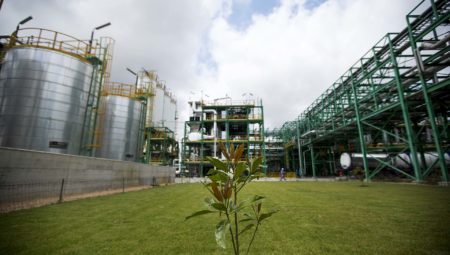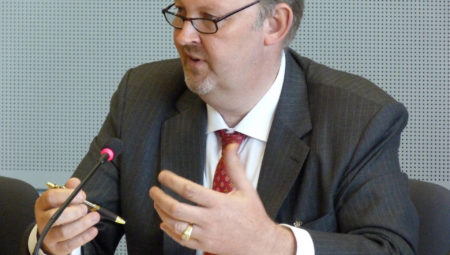In May 2017, the European Investment Bank (EIB) published a study, performed by Ernst&Young. The report, devised in close collaboration with the Bio-based Industries Consortium and its members, aims to collect information on the access-to-finance conditions for larger investment projects in the domain of biobased and the blue economy. Furthermore, the study also explores the need and potential for public risk-sharing instruments as well as policy actions (EU and on a member state level, ed.) that would be able to attract funding from the investment community. First of all, what is the current situation in terms of capital investment? As for the public sector, the EU is investing 3,8 billion euro into the bio-economy in the period 2014-2020. The EU also participates with roughly 1 billion euro in the Bio-Based Industries Consortium: an investment that is matched by at least 2,7 billion euro of private investments.
Risk factors
However, these funds for now seem to be insufficient for biobased and blue economy projects to ‘move’ across the TRL-time line. ‘Ernst&Young surveyed more than 20 biobased industries investment projects, some of them running under the BBI-flag’, Dirk Carrez (Biobased Industries Consortium) says. ‘Roughly eight of ten respondents mention difficulties in accessing finance from private investors. These parties identify a number of risk factors, such as market demand, technology and EU/national regulation. The first risk-factor is identified as the major one: most biobased markets are not fully developed yet and have to compete with mature sectors.’
The report also mentions issues in getting sufficient public funding, especially in the commercialisation phase. Procedures are complicated, lengthy and the sums are relatively low, compared to the private funding needed. Therefore, the catalytic effect of public funding is low, which in turn turns private investors away. Carrez: ‘The result is that industrial-scale (TRL9) projects are being halted, which in turn slows down the transition process towards a European bio-economy.’
Future growth potential
The report also includes feedback from so-called financial market participants (FMP’s). These parties – some of them are investing into the bio-economy – confirm that they view regulation, market and technology-related risks as being very high. Furthermore, they state that sometimes there is information asymmetry and insufficient understanding of the sector and related risk assessment. ‘Interestingly enough, these investors are not turned away entirely by the aforementioned risk factors’, Carrez says. ‘As said before, some already are investing and they state that they see its future growth potential in terms of turn over and profit. It is the sustainable and innovative drive of the sector that appeals to these investors. Some of these investors identify early mover advantages, which signals the urgency to invest now and not apply a ‘waitandsee’-approach.’
Simpler procedures
In short, there is not so much lack of public funding in general, but more a lack of funding in the upscaling and commercialisation stage of biobased industry related projects. This is also the stage in which private investments have to step up. If not matched properly with public funding and sufficient insights (information asymmetry, ed.), private investors are not willing to draw their wallets. The report mentions a number of public financial instruments that could partially de-risk private investments, such as loans, guarantees or equity investments. These instruments also should have more favourable conditions such as simpler procedures and lower interest rates. The establishment of investment platforms, bundling together various public and private investors, is seen by a majority of FMP’s as a way to mitigate risks across the value chain. As for the information asymmetry, most FMP’s advocate the development of information exchange platforms that would provide market and technology insights for investors.
Effective, stable and supportive framework
The report concludes with four key recommendations to address the existing funding gaps in the biobased and blue economy. First of all, the establishment of an effective, stable and supportive regulatory framework at the EU level. Policy actions should demonstrate a long-term commitment to support the development of more sustainable alternatives to fossil fuels. This should not be limited to energy but extended towards chemicals and/or materials. These actions should be directed at creating price and volume stability as well as the availability of sufficient feedstocks. The report identifies many routes, for example harmonisation of labelling standards, setting targets for biomass use in materials/chemicals or procurement programmes.
Meeting point
Second, to raise awareness within the industry of specific funding tools from the EIB which are already in place: InnovFin and the European Fund for Strategic Investments (EFSI). These funds, though not specifically targeted at the bio-economy, could match other funding instruments such as grants from the BBI JU. The establishment of a EU-wide information platform could help creating awareness regarding these funding options as well as provide insights to investors. Third, the development of a new EU risk sharing financial instrument, potentially in the form of a thematic investment platform which would be able to attract private investors.
Last but not least, the creation of a EU-wide information platform that would provide insights to all stakeholders regarding market, technology and public investment opportunities (f.e. InnovFin, EFSI). Carrez: ‘Such as meeting point could help promoters and investors find partners and create business partnership that are needed to bring the bio-economy forward.’


